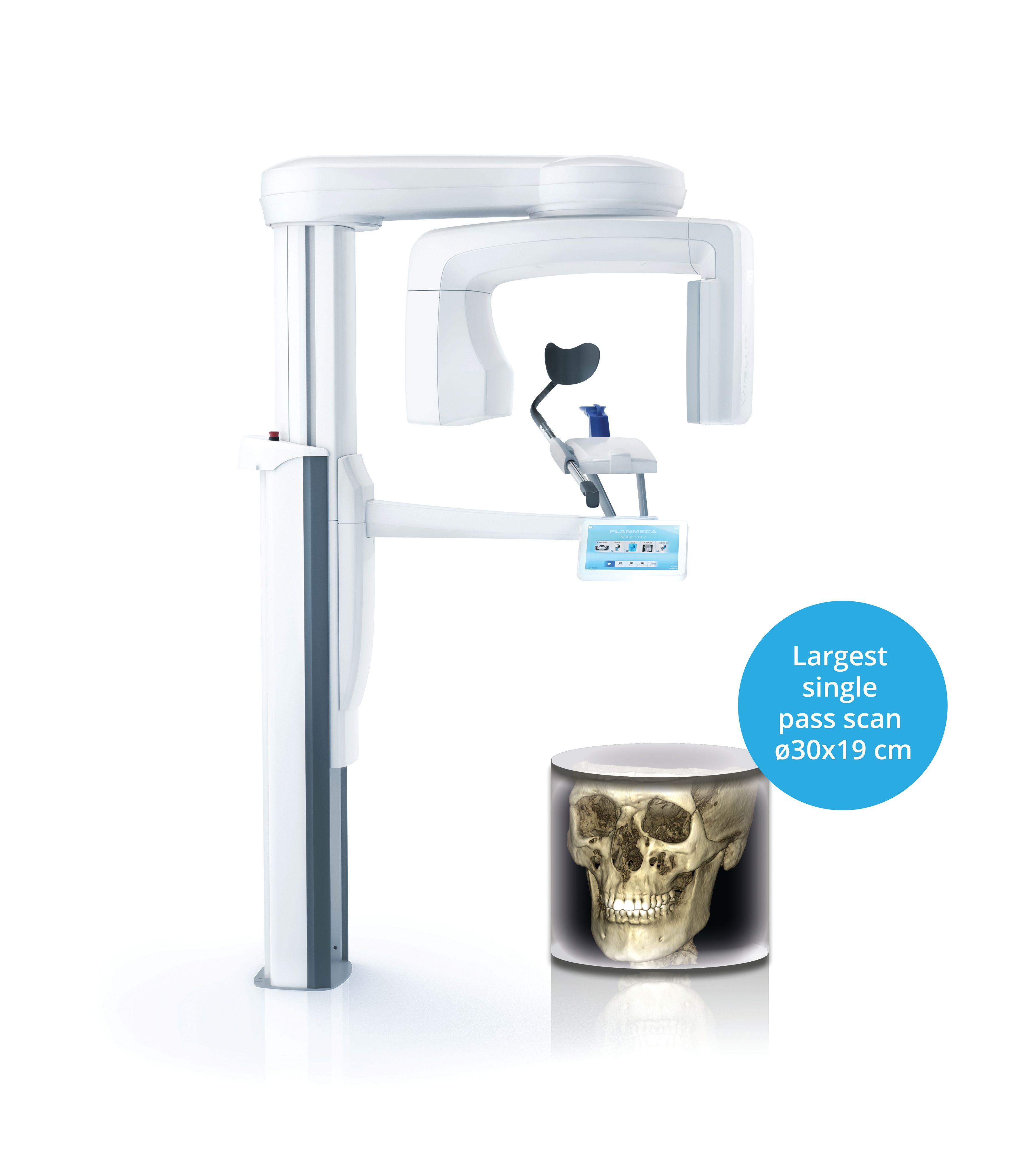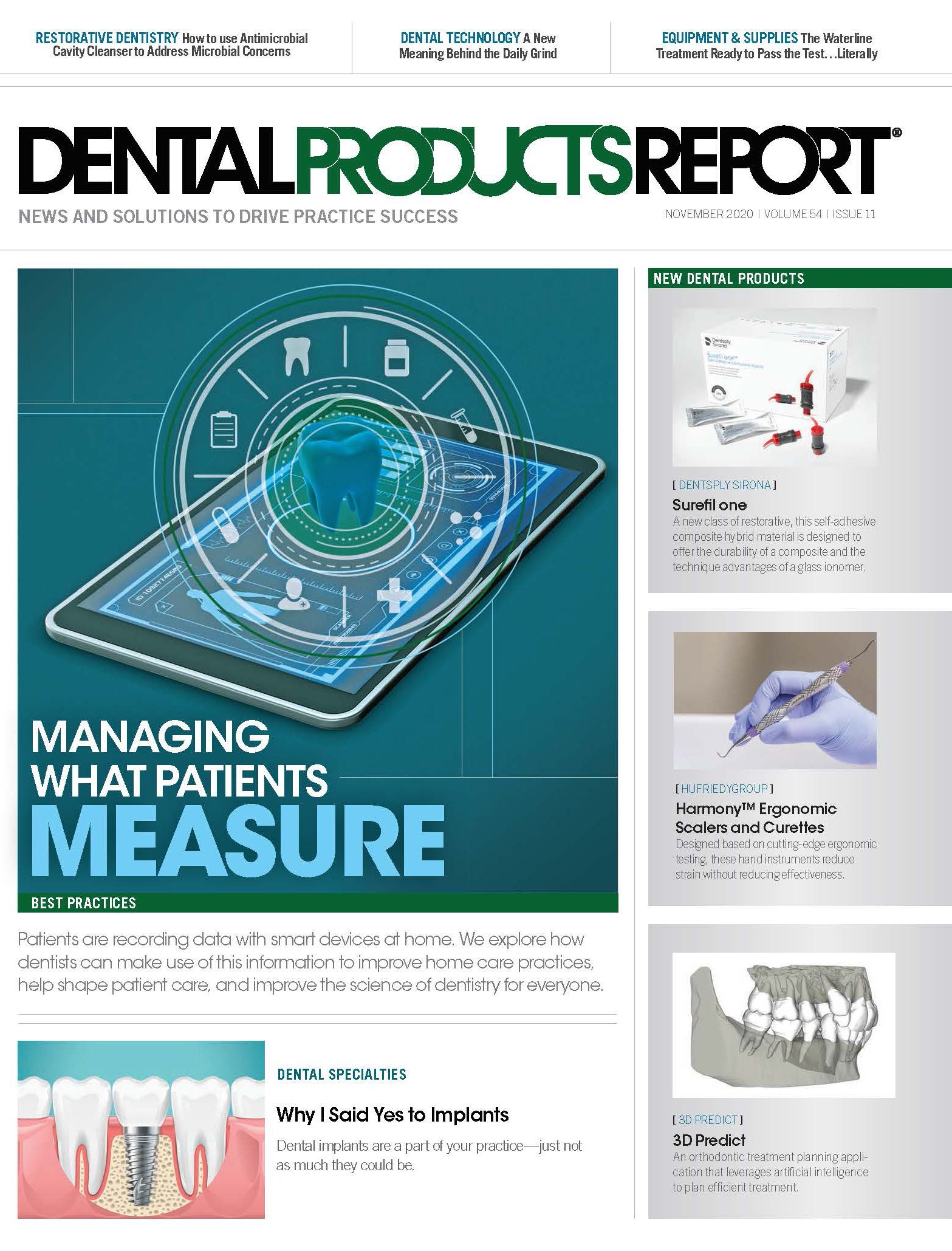Using 2D radiology in her practice left orthodontist Maria Atique, DDS, with the feeling she was missing important information that could benefit her patients. That’s when Dr Atique began researching CBCT imaging to add to her office.
Planmeca Viso™
The Viso CBCT line is available in 2 different units with the same features—the G7, which has an adjustable volume size between 3x3 and 30x30 cm, and the G5, which supports volume sizes between 3x3 to 20x17 cm. The Viso features virtual field-of-view positioning that’s controlled directly from the unit’s panel using integrated cameras for a live patient view. Its 25x30 cm sensor offers a wide range of clinical uses, from single tooth to full skull. Planmeca ProFace® utilizes the Viso’s 4 built-in cameras and LED light strips for highly-detailed 3D images. The Planmeca CALM™ movement correction algorithm eliminates the need for retakes by canceling the effects of patient movement. Both CBCT units offer Ultra Low Dose™ imaging protocol, exposing patients to lower levels of radiation without sacrificing image quality.
Planmeca
630-529-2300 | planmeca.com
“I’d been wanting to switch to 3D imaging for years because I think I can better diagnose my patients. CBCT images provide far more detailed information than conventional 2D radiographs,” says Dr Antique. “For example, supernumerary teeth, the position of impacted teeth, alveolar boundaries conditions—2D x-rays just don’t pick up all those details.
“So, I started looking at all the companies that have the CBCT and asking [other] practitioners which ones will be the best option,” Dr Atique continues. “They said, ‘Oh now the Planmeca Viso is coming out. If you’re going to buy a new one, just get the best one in the whole series.’’’
That recommendation encouraged her to take a closer look at Planmeca’s Viso G7, and she eventually added the unit to her practice in northeastern San Antonio, Texas. Now, with CBCT imaging, Dr Atique is able to get a better understanding of her patients’ conditions.
“When we have a new patient come into the office for the first time we take a CBCT x-ray. From that, I can render a panoramic x-ray and the lateral cephalometric and look at the 3D images,” Dr Atique says. “Then I get together with the patient and we’ll review everything, do the diagnosis, and make the treatment plan.”
This allows Dr Atique to offer convenient appointments for her patients. She is able to make comprehensive diagnoses and discuss treatment options during the consultation, she says. This is a big win for patients because it provides for more predictable treatment planning, more efficient patient education, and improved treatment outcome and patient satisfaction, Dr Atique says.
Several features of the Planmeca Viso really set the unit apart, Dr Atique says. Planmeca’s CALM™ technology corrects patient movement and allows her to take sharp images, even with her pediatric patients.
“We have young patients and for the little ones…it’s harder for them to stay still,” she says. “But with Planmeca CALM, I don’t have to worry about retakes, which is handy for my little patients.”
The Viso’s footprint is also smaller compared to other large field-of-view systems, Dr Atique says, and it fits perfectly in her office.
The Planmeca Viso also allows Dr Atique to recognize problem areas outside of the mouth, she says—something that helps her focus on her patients’ overall health, not just their oral health.
“Even though patients come to the office concerned about the alignment of the teeth, I not only look at their teeth, but also at their facial structures. In my practice, it’s important to evaluate a patient’s breathing and orofacial muscle balance,” Dr Atique says. “Airway issues can be caused by several factors, such as underdeveloped jaws, issues at the nasal cavity, oropharynx, and larynx. Now, with CBCT, I can better evaluate these areas and refer patients to other specialists.”
Training her team on the Planmeca Viso was crucial, Dr Atique says. A Planmeca representative spent a day with Dr Atique’s team, which she said was invaluable and her team was able to begin operating the Viso easily.
The Planmeca Viso has helped Dr Atique stand out from other practices in her area because she can offer more complete appointments and begin treatment planning on day-1.
“It’s very common in orthodontics for patients to get a second opinion. Because the CBCT images give me the opportunity to have a comprehensive evaluation of the patient, I think that gives me an advantage over other practices that have a more limited exam,” she says. “The patients also see that we use the latest technology and they decide to start treatment with us instead of going to another office.”


